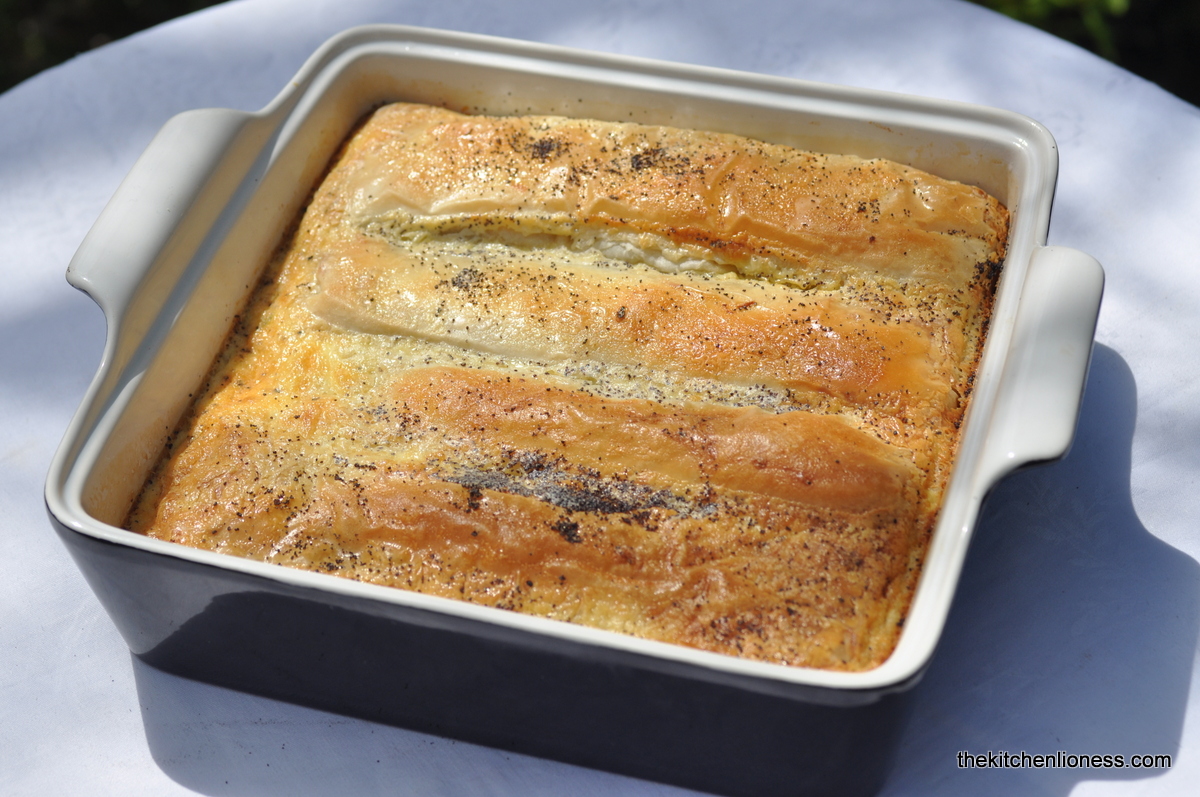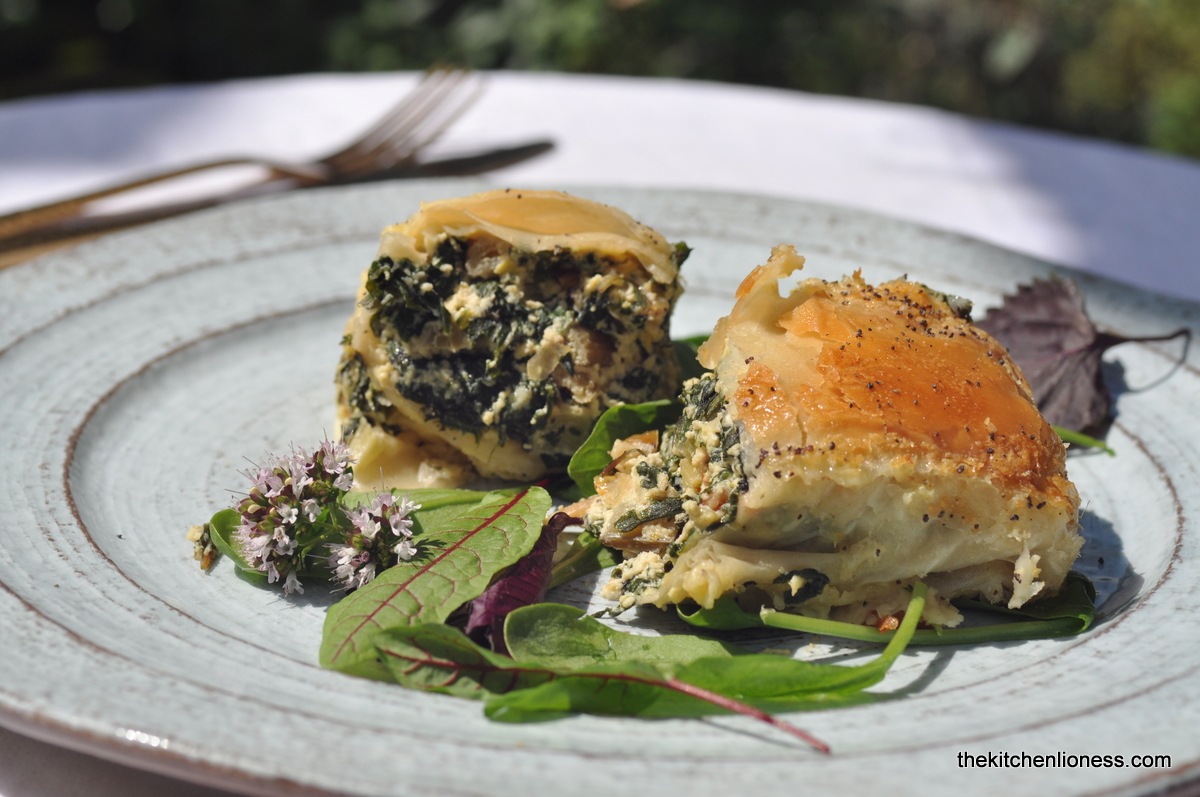Swiss chard (Mangold) is a member of the beet family and has large, flat, crinkled green
leaves with thick, fleshy stalks and ribs. The taste of Swiss chard is rather rich, complex and
robust. You can even think of Swiss chard almost as two vegetables in one as both the leaves and
stems can be used. Swiss chard is popular in Italian and French, but also in German cooking.
Swiss chard is also simply called 'chard', or 'leaf beet', 'white beet' or 'spinach beet'. And different varieties may have red, pink, white or yellow stalks.
Swiss chard is in season from June to August, and from October to April.The stem is often cooked and served separately, for example in a stir-fry. The leaves cook more quickly than the stem and can be added to omelettes, soups, strudels, tarts - last November, I posted a recipe for a delightful Red Swiss Chard & Mushroom Filo Tart. For even cooking, remove the stems from the leaves, then chop or slice the stems and start cooking them for a few minutes before adding the leaves.
Before you start cooking your chard, you have to wash it very well, before use, to remove any grit, and trim only when ready to cook.
Rainbow chard with vibrant red, pink, yellow and white stems, is not one actual variety of chard but rather a mix of white-stemmed, red and golden chard. The mix of the different colors not only looks quite pretty, but packs a lot in flavor as you as it combines the spinach like flavor of Swiss chard with the earthy taste and sweetness of red chard and the mild nutty flavor of golden chard.
Look for rainbow varieties of chard at farmers’ markets or farm shops. When shopping for Swiss chard, you should look for fresh green leaves and firm stalks with no signs of wilting or discoloration. When you shop for rainbow chard, look for a good mix of the different colors with bright green leaves and fresh-cut stems. You should keep your chard in a paper bag in the fridge for not more than 2 to 3 days, or blanch and freeze your veggies for later use. If you choose to freeze your chard, you should rememberthat while chard leaves freeze well, the stems tend to become somewhat soggy. For longer storage in your fridge, you should cut the leaves from the stems and keep them separate - make sure to roll up the leaves between layers of paper towel, that way they will keep reasonably fresh for about a week.
Rainbow Chard Filo Strudel with Ricotta
Ingredients
(for 10 persons)
- 1 bunch Swiss chard, rainbow chard if possible (approx. 500g/16 oz)
- 2 shallots
- 2 garlic cloves (optional)
- 12 tbsp of olive oil, suitable for cooking
- salt
- freshly ground black pepper
- freshly ground nutmeg
- 500g (16 oz) ricotta
- 50g (1.7 oz) freshly grated Parmesan
- 4 eggs, organic or free-range
- 12 strudel or filo dough sheets (filo dough, about 12in x 12in)
- 150g (5.3 oz) cooking cream
- 1 to 2 tbsp of black poppy seeds
Preparation
- For the filling: rinse the Swiss chard, trim, thinly slice the stalks and coarsely chop the greens.
- Peel the shallots and garlic (if using), finely chop and sweat in the oil until translucent. Add the chard stalks and sauté for 10 minutes. Add the greens and sauté for 2 to 3 minutes, season with salt and pepper. Place the chard in a bowl and let it cool slightly.
- Add the ricotta with 2 eggs to the chard mixture. Mix the filling well, then season with salt and pepper. Add freshly grated nutmeg and parmesan to the mixture and stir well.
- Preheat the oven to 200 °C (395°F). Brush a baking dish with olive oil.
- On your work surface, place four filo dough sheets next to each other and brush with olive oil. Cover each of the four sheets with one more sheet and finish off smoothly. Repeat this process once again.
- Place the four filo dough stacks side by side, brush each top with oil.
- Spread the Swiss chard filling on the bottom third of each filo stack. Leave a 3 cm wide edge at the ends. Roll up the filo leaves, squeeze the ends together OR fold the ends under and brush with olive oil. Place the filo strudel side by side in the baking dish.
- Whisk the remaining eggs (2) with cream, salt and pepper and pour over the strudel. Sprinkle poppy seeds on top.
- Bake in the oven for about 45 minutes. As soon as the strudels are light brown and the filling is stocked, remove the baking dish from the oven.
- Let the strudel cool slightly and cut into portions.
- Eat hot or enjoy at room temperature.
Zutaten
(für 10 Personen)
- 1 Mangold (ca. 500g)
- 2 Schalotten
- 2 Knoblauchzehen
- 12 EL Olivenöl, zum Kochen geeignet
- feines Ur-Salz
- frisch gemahlener schwarzer Pfeffer
- etwas frisch gemahlene Muskatnuss
- 500g Ricotta
- 50g frisch gemahlener Parmesan
- 4 Eier, Bio oder Freiland
- 12 Strudel- oder Filoteigblätter (Filoteig, 30 x 31cm)
- 150g Sahne
- 1 bis 2 EL schwarzer Mohnsamen
Zubereitung
- Den Mangold putzen, waschen und auf einem Sieb gut abtropfen lassen. Die Blätter von den festen, Blattrippen abschneiden. Die Blattrippen in ca. 3mm dünne Streifen schneiden. Die Blätter grob hacken.
- Schalotten und Knoblauch fein würfeln und in 3 EL Olivenöl glasig dünsten. Die geschnittenen Blattrippen des Mangolds zufügen, mit Salz und Pfeffer würzen. Alles ca. 10 Minuten unter häufigem Wenden dünsten. Dann die gehackten Mangoldblätter zufügen und weitere 2 bis 3 Minuten mit andünsten. Die Mangoldmischung in eine große Schüssel geben und leicht abkühlen lassen.
- Den Ricotta mit 2 Eiern zum Mangold geben. Die Füllung gut mischen, dann kräftig mit Salz und Pfeffer abschmecken, etwas frisch geriebene Muskatnuss und Parmesan dazu geben, nochmals rühren.
- Backofen auf 200 °C (Ober-/Unterhitze) vorheizen. Eine Auflaufform mit Olivenöl fetten.
- Vier Strudelteigplatten nebeneinander legen und mit Olivenöl bepinseln. Jedes der vier Blätter mit einem weiteren Blatt belegen und glatt streichen. Diesen Vorgang einmal wiederholen.
- Die vier Strudelplatten nebeneinander ausbreiten, jeweils mit Öl bepinseln.
- Die Füllung jeweils auf dem unteren Drittel einer Teigplatte verteilen. Dabei an den Enden jeweils einen 3 cm breiten Rand frei lassen. Strudelblätter aufrollen, an den Enden zusammendrücken und mit Olivenöl bepinseln. Die Strudel nebeneinander in die Auflaufform legen.
- Restliche Eier (2 Stück) mit Sahne, Salz und Pfeffer verquirlen und über die Strudel gießen. Mohn darüber streuen.
- Strudel 45 Minuten im Ofen backen. Sobald der Strudel hellbraun und die Füllung gestockt ist, die Auflaufform aus dem Ofen nehmen.
- Strudel leicht abkühlen lassen und in Portionen schneiden. Schmeckt warm sowol als auch und kalt.
For more Swiss chard inspiration, take a look at my recipe for:
- Red Swiss Chard & Mushroom Filo Tart (Filotarte mit rotem Mangold & braunen Champignons) (HERE)
For more Filo Tart inspiration on my blog, please have a look at the following:
- December Filo Tart with Mini Brussels Sprouts (Winterliche Filotarte mit Rosenkohlröschen) (HERE)
- Filo Tart with fresh Figs & Prosciutto (Filotarte mit frischen Feigen & Prosciutto) (HERE)
- Crispy, Crackly Apple-Almond Tart (HERE)
- River Cottage "Veg Everyday" Courgette and Filo Rice Pie (HERE)
- Filo Tart with White Asparagus, Goat Cheese & Meadowsweet Blossoms (Filotarte mit weißem Spargel, Ziegenkäse & Mädesüßblüten) (HERE)











This sounds delicious! I'd love to use all sorts of greens in this way. Thanks for the recipe.
ReplyDelete